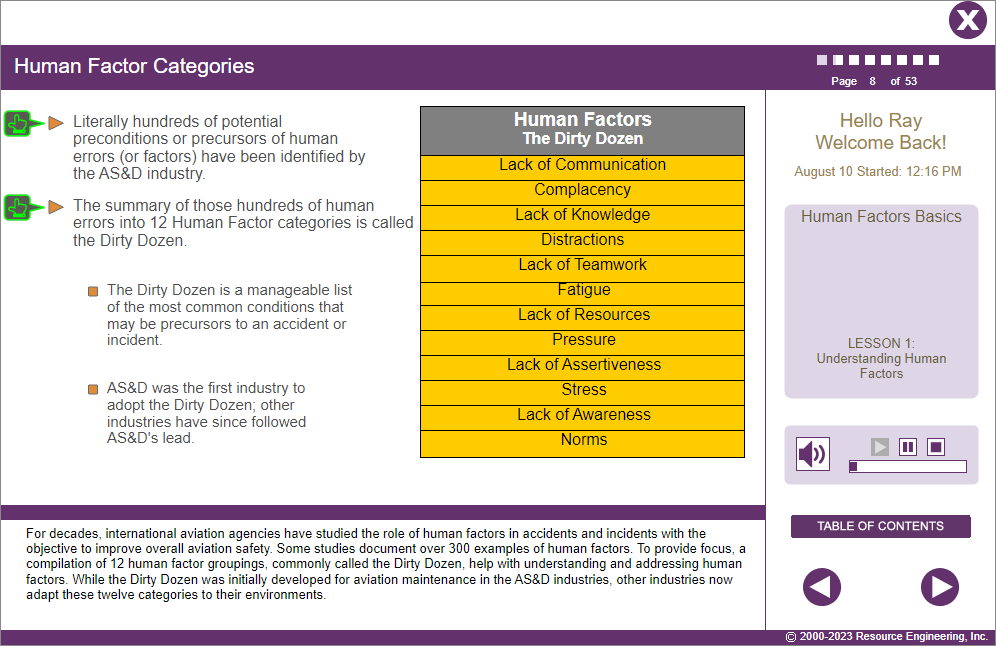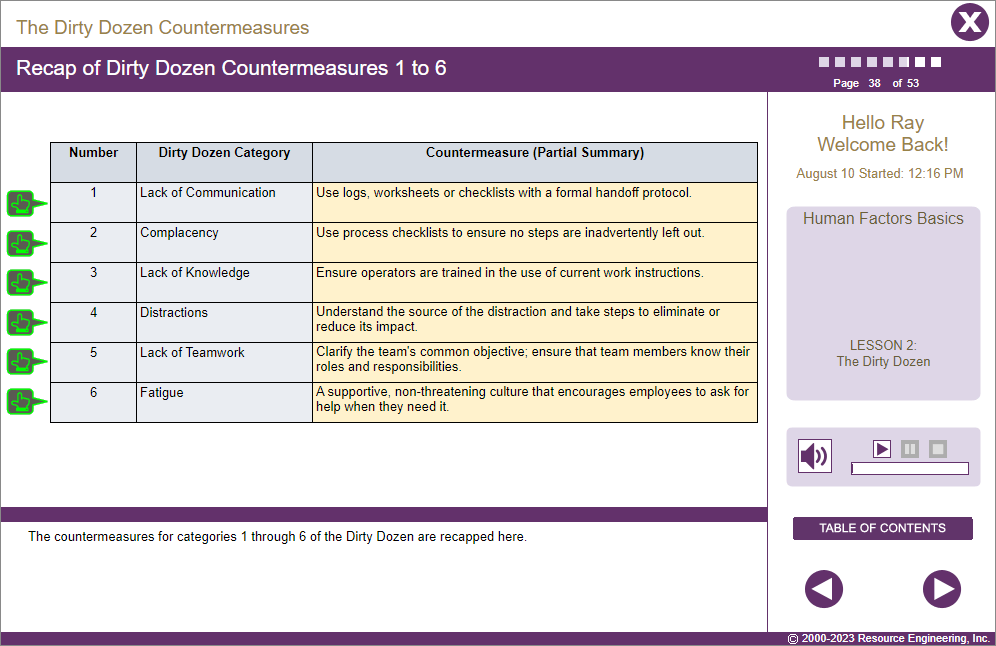Course Information
Human Factors Basics Training
Learners will be able to:
- Explain how human factors contribute to safety accidents/quality incidents.
- Determine how the Dirty Dozen of Human Factors apply to their work and products.
- Implement appropriate countermeasures for the Dirty Dozen.

About This Course
The field of human factors is dedicated to better understanding how humans and the work they do can be integrated with technology safely and efficiently. While errors, accidents and incidents are rarely because an operator did something wrong on purpose, issues are not always solely the cause of a mechanical, electrical or software failure either. Often, an imbalance in the human physical, mental or emotional state is a precursor that, coupled with process or operational nuances, leads to an error. While there can be hundreds of specific examples of human factors, they are typically categorized into the “Dirty Dozen.” Significant benefits are gained by considering and addressing human factors as part of the overall Quality Management System in an organization.
Learners taking this course will understand what Human Factors are and gain an appreciation for the role they can play in both safety accidents and quality incidents. The course uses the Aviation, Space and Defense (AS&D) industry summary classification of human factors called The Dirty Dozen. The Dirty Dozen categorizes the (many) human factors into a manageable list of 12. Human factor symptoms are discussed and countermeasures an organization can take to help mitigate their impact are explored. The course also covers additional organizational initiatives necessary to effectively deal with human factors. All employees need to be aware of what human factors are and how they may impact their work capabilities. Investigators, even the most experienced, need to develop new skills for digging into the subjective nuances of human factors.
- None.
- English (EN-US)
- Chinese (simplified) (ZH)
- Czech (CS)
- French (FR)
- German (DE)
- Italian (IT)
- Japanese (no audio) (JA)
- Korean (no audio) (KO)
- Polish (PL)
- Portuguese (Brazilian) (PT-BR)
- Romanian RO)
- Russian (RU)
- Spanish (ES)
- Vietnamese (no audio) (VI)
Course Objectives
- Explain what human factors are and how they can be a precursor to safety accidents and/or quality incidents.
- Explore a summary list of human factors called the Dirty Dozen.
- Introduce countermeasures that can help mitigate the impact of human factors.
- Provide a basic organizational roadmap to ensure the culture addresses human factors and applies corresponding countermeasures.
Course Outline
Lesson 1 | Understanding Human Factors
- Human Factors as Precursors
- Human Factor Categories
- Human Factor Countermeasures
- Human Factors and Quality Management Systems
Lesson 2 | The Dirty Dozen
- What Each Category Means
- Symptoms and Evidence
- Countermeasures
Lesson 3 | Managing Human Factors
- The Need for Clear Policies
- Embrace a Just Clause
- Reporting and Monitoring Systems
- Human Factors & Design Considerations
- Human Factors & the Work Environment
- Tips for Assessing and Mitigating Impact
Course Test Challenge
- An assessment of the learner’s progress in this course.

5.0 out of 5 stars
Comments from Learners About This Course
- This course was informative and open my eyes to things that can and will be overlooked.
You may also be interested in…
- Introduction to AS9100D – This course provides an overview of the Quality Management System standards for the Aviation, Space and Defense industries.
- PPAP for Aerospace – A Targeted Training Course on the Production Part Approval Process specifically as it relates to the Aerospace Industry.




